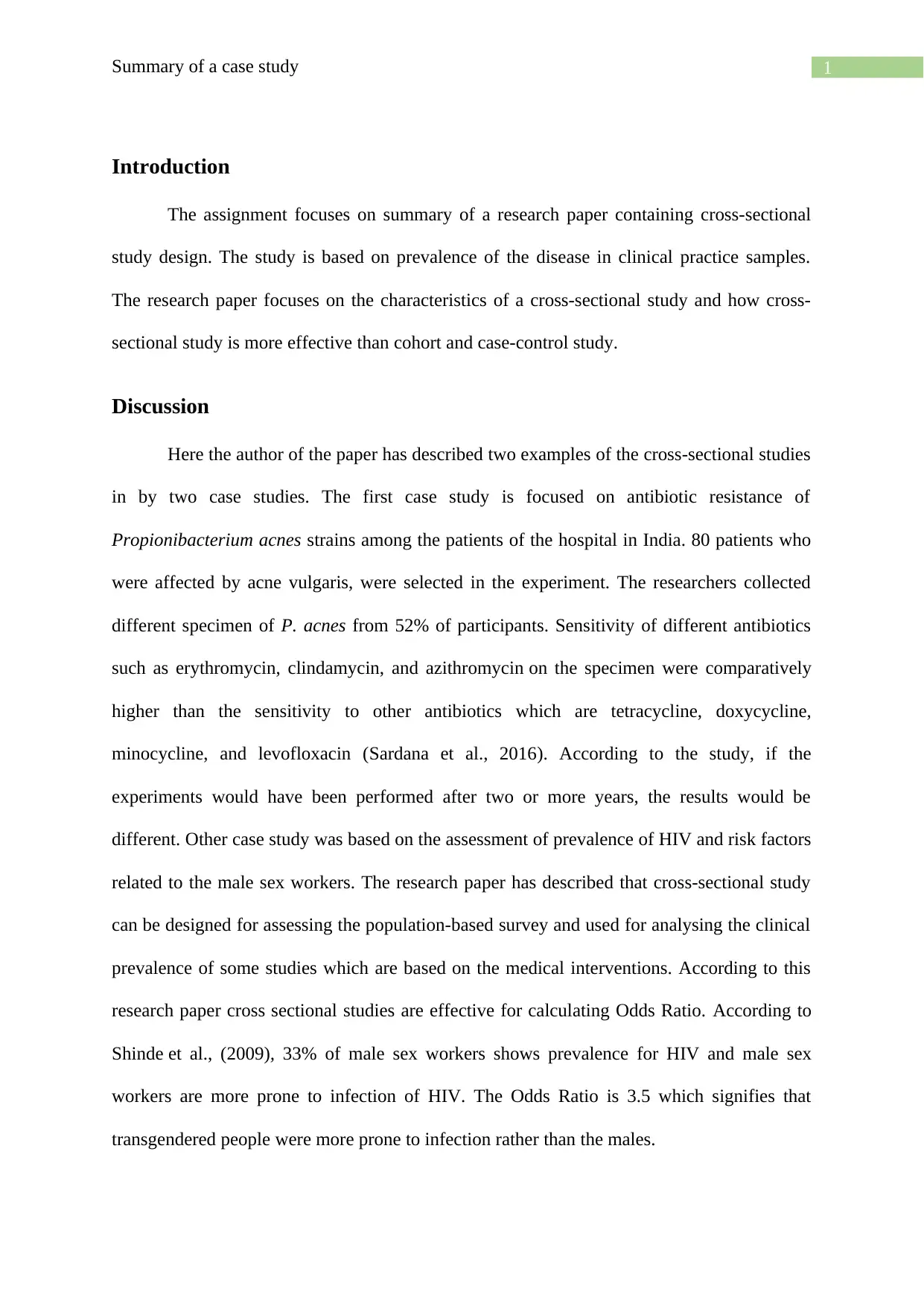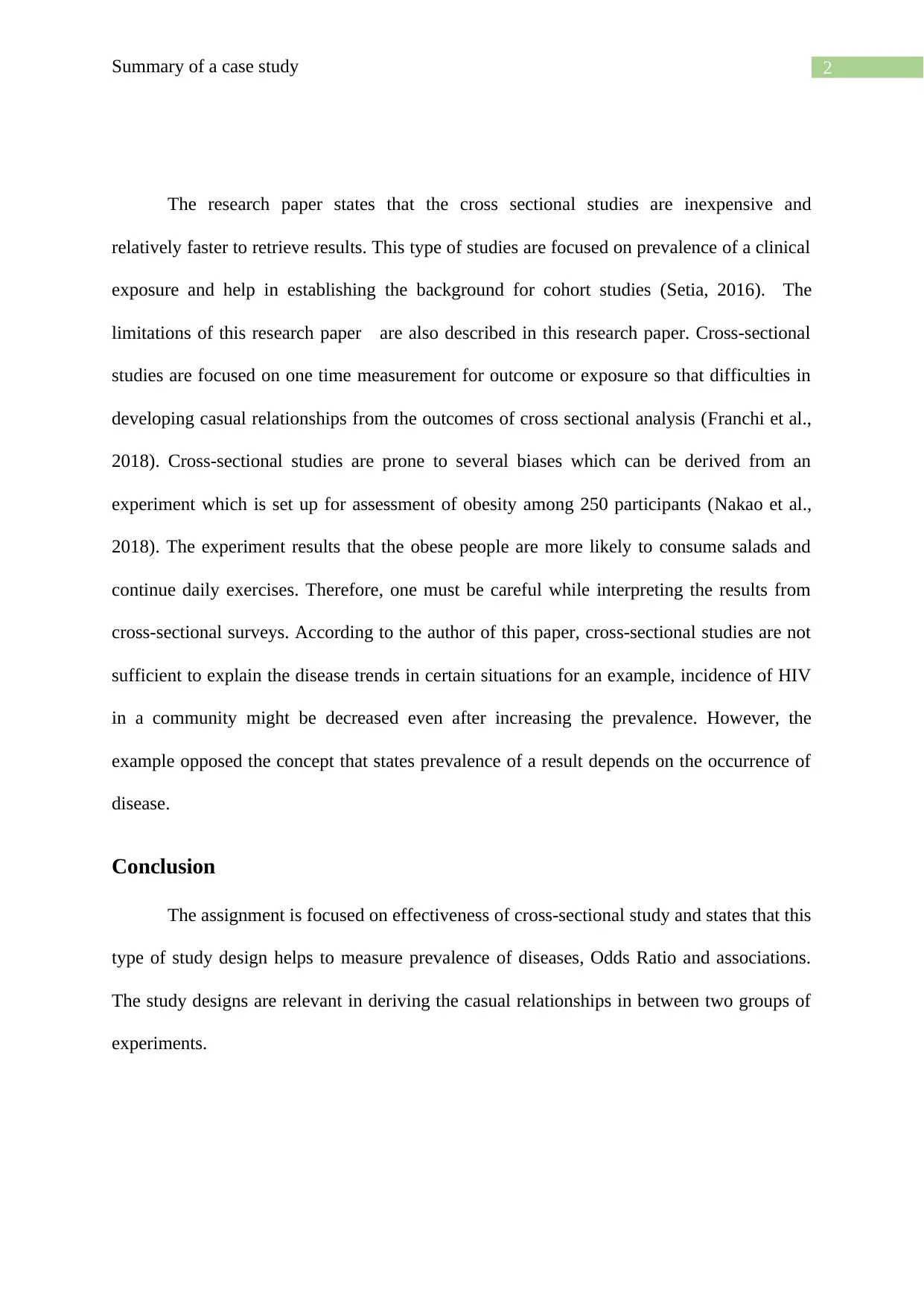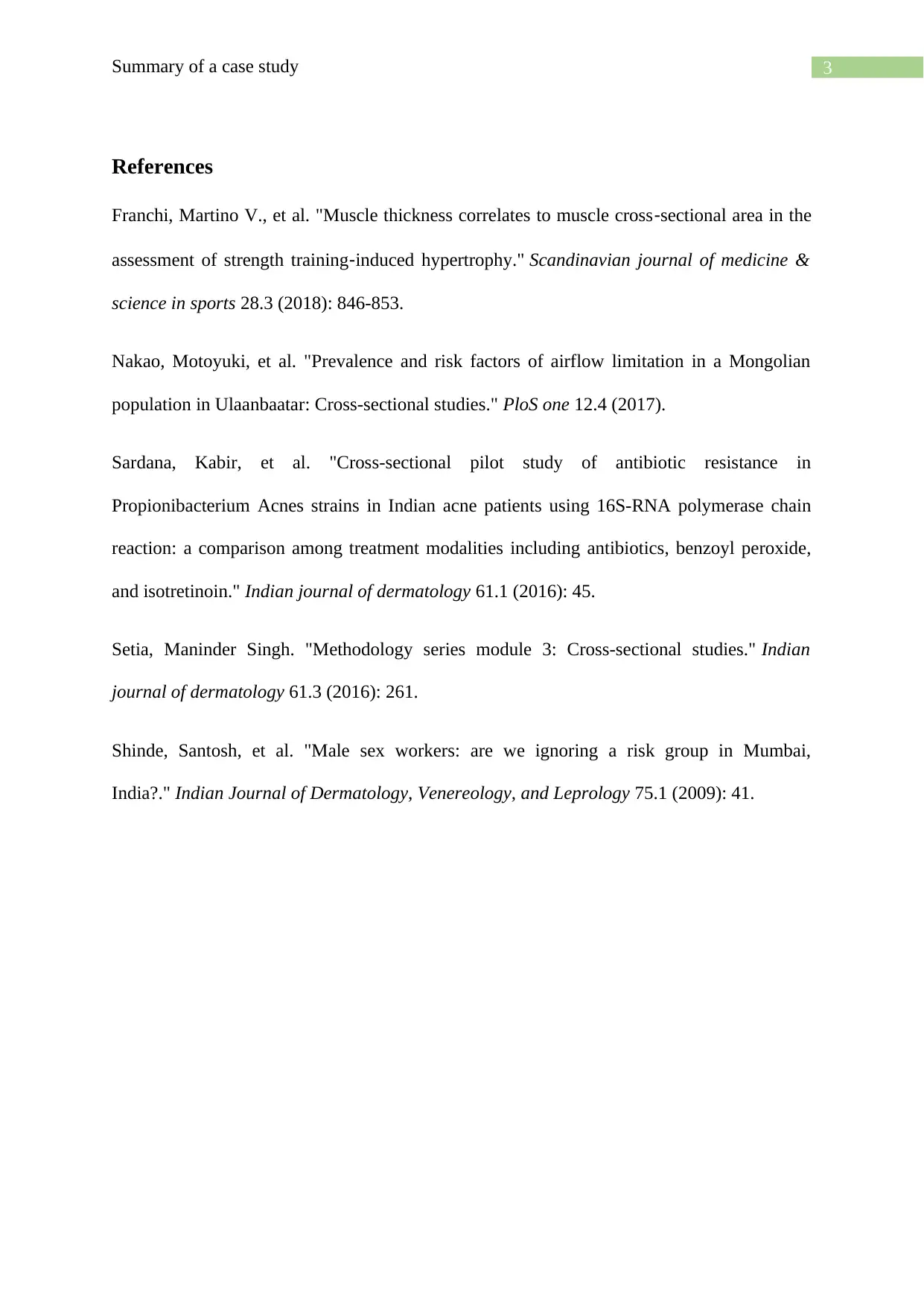Comprehensive Summary: Cross-Sectional Studies in Medical Research
VerifiedAdded on 2022/08/18
|4
|800
|46
Report
AI Summary
This report summarizes a research paper that focuses on cross-sectional study designs, comparing them to cohort and case-control studies. The paper presents two case studies: one on antibiotic resistance in Propionibacterium acnes strains and another on HIV prevalence among male sex workers. The first case study highlights antibiotic sensitivities and the potential for changing results over time. The second case study assesses HIV prevalence and related risk factors, calculating Odds Ratios to identify vulnerable populations. The paper emphasizes the cost-effectiveness and speed of cross-sectional studies in establishing baselines for further research, while also acknowledging limitations such as the inability to establish causality and susceptibility to biases. The author concludes by emphasizing the utility of cross-sectional studies in measuring disease prevalence, Odds Ratios, and associations, making them valuable for deriving relationships between experimental groups.
1 out of 4











![[object Object]](/_next/static/media/star-bottom.7253800d.svg)